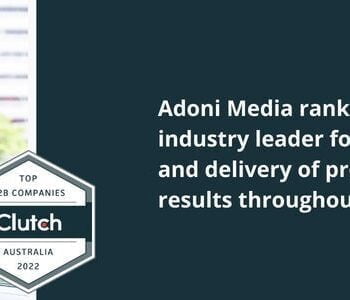How to measure the success of a PR campaign
Measuring your PR campaign is an important part of the public relations process as it allows you to see how successful you were in gaining coverage for your client, and it helps them to see the value and audience reach of the stories you achieved.
While the results will vary, they help to show which targets you are achieving and where you will need to adjust your strategy, either mid campaign or at the start of the next, to further improve your reach.
Knowing where you can improve and what you are doing right is invaluable information for long-term success for any PR Agency. It is also valuable to know what resources and tools are effective for achieving your goals and where you can save time, effort, and money. A well-informed overview of your company’s metrics is also essential should the need for crisis communications arise.

Why you should measure your PR campaign
There are a few things to note when planning and measuring your campaign:
- Know or establish a baseline to measure against so you can see how your campaign has impacted your metrics. Tracking growth is difficult if you don’t know your starting point.
- Set clear and measurable goals for what you want to achieve. The clearer the goal, the easier it will be to measure success. Depending on your goal, you might measure engagement, media coverage, public sentiment, or the number of social media followers.
- Decide and test what tools you will use to measure, and test them beforehand. You don’t want to spend money or rely on software that does not work, or you can’t navigate when you need to.
- Critically analyse your data. While software can be immensely useful in collecting and sorting through data, it is important to check it is accurate and relevant.
Measuring the success of a PR campaign ultimately provides proof of value through analysis of earned media value.
What is earned media?
Earned media is defined as publicity or exposure gained from mainstream and traditional media rather than paid advertising. Essentially, it is coverage that is earned through organic promotional efforts, which most of the time, is PR.
Some examples include:
- Unpaid social media posting/reposting
- Customer/unpaid influencer reviews
- Word of mouth
- TV and radio coverage
- Newspaper /magazine articles
PR is ultimately striving to connect with target audiences through these unpaid channels, with each element of earned media constantly being monitored and evaluated throughout a campaign. By ensuring consistent monitoring and measurement, PR professionals can prove value and validate efforts internally, while also refining their strategy to improve future campaign efficiency.
Monitoring the media
Media monitoring is a fundamental method used in the PR industry for determining how successful a pitch, media release, or campaign has been.
There are a range of options you can easily investigate, including media mentions, sentiment analysis, and coverage value. PR professionals know how to navigate the mounds of data to find the most valuable and relevant information for their clients, saving you the hassle.
Through a wide variety of software, you can measure how many times and how frequently your client’s brand name, hashtags, or other key words appear across news media within specific time frames. It allows you to automatically calculate and categorise data and media reach.
The more your client’s brand or keywords are mentioned, the more likely your content is engaging and newsworthy. That means your message has successfully reached a wide audience, boosting brand awareness.
Measuring success
Gaining a high amount of coverage is ideal, but sometimes, not all coverage is beneficial for your client.
Some software offers sentiment analysis, where you can determine whether brand mentions were positive, neutral, or negative. Sentiment is often determined by content language analysis using word choice and other indicators to estimate how a brand is being perceived.
Monitoring sentiment can be an effective way to measure what people are saying, reading, and feeling about your client’s brand. Keeping track of negative sentiment is crucial when navigating crisis communications and helps you protect or restore a brand’s reputation.
Media monitoring can also be used to estimate how much money you would have had to spend on advertising to gain the same level of media exposure you received through earned media. This is called the Advertising Space Rate (ASR) and is recognised as the industry standard to measure the value of earned media through PR.
Looking at ASR is a great way to determine ROI (return on investment) for your client. The more stories across television, radio, print and digital sources, the greater brand awareness for your client.
Measuring social media and online success
Social media is crucial to interacting with your audience and gaining brand awareness. Monitoring your social media metrics is another key method to determine how successful a campaign has been in reaching its intended targets.
Within the social media platforms themselves, or by using third-party software, you can keep track of how many new followers you have attracted, engagement rate with posts, and how many people your message has reached.
One of the easiest ways to measure direct brand interaction is through social media followers. If raising social media engagement is one of your goals, simply checking your follower count across platforms before and after a campaign is a great way to understand how effective it was in reaching and appealing to new people.
Engagement can be tracked through metrics such as likes, comments, and shares, and can be relevant to specific posts or across a company’s page/profile on a platform. Using this information, you can see how successful your campaign has been in driving meaningful interactions, and which social media communications are most relevant to your audience.
Track whether traffic to your website has risen during and following your campaign. You can measure how many people are going directly to your website or content, how regularly they are searching for you, and how many people travel to your website through links on other sites.
A high number of backlinks means your brand is receiving engaging coverage elsewhere, and the more people visiting your site, the higher the awareness of your brand and services.
Measuring sales figures
Sales monitoring is an age-old metric but it depends on your business model. Following your campaign, have you noticed any growth in your sales figures? Sales are unlikely to skyrocket overnight, however, effective PR raises both brand awareness and brand trust which will result in better sales figures over time.
Measuring the competition
Monitoring competitors is already a staple in business. However, it can be beneficial to monitor their media engagement as well and compare it against your own, especially following a campaign.
Learn from your competitors’ successes and mistakes and adjust your campaigns and targets accordingly.
There is more to a PR campaign and its measurement than what meets the eye. Each of these measurement methods is vital to our strategy and success at Adoni Media, and reviewing them, analysing the results, and refining strategy ensures our campaigns capture attention, every time.
Need helping creating a PR campaign whose success is obvious?
Adoni Media has been providing PR advice and strategies with proven results since 2012. To find out how we can prove the unique value of an expertly executed PR campaign for your company:


